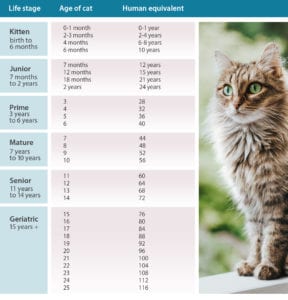It’s getting really close to dental month and while that is important, I want to talk about why it’s important we focus on this issue all year long. First and foremost, a pet with an unhealthy mouth IS PAINFUL. Many owners are unaware or don’t want to believe this is true but animals feel pain just as we do. If you had an abscessed tooth, do you feel pain? Of course you do! Animals by nature are hard wired to not exhibit signs of pain until the pain is excruciating and they can no longer compensate for the pain. Unfortunately many of our pets suffer in silent pain due to their inability to communicate their needs. That is where we as pet lovers and veterinarians have to step up and make sure those mouths are getting the best care possible. How do we accomplish this:
1) Oral care starts with baby teeth. This is an important time to get your pet accustomed to having their teeth brushed. You can make it part of getting your puppy or kitten used to regular grooming such as nail trims, ear cleaning, etc.
2) Regular veterinary visits. Each time your pet comes to see us, we look at the teeth. In a lot of cases, that’s the first place we look. If a dental cleaning is needed, we will let you know and provide you an estimate. Our goal is not to wait until your pet has halitosis and periodontal disease. We want to do early, preventative care. Remember, gingivitis is reversible, periodontal disease is not. Once your pet heads down that road, they will continue to lose teeth. We try to minimize tooth loss at this point with aggressive at home care and dental cleanings every 6 months. Wouldn’t it be nice not to reach this point? Here is a slideshow presented by Dr. Bert Dodd at A&M that I feel really puts our pet’s oral state into perspective as it relates to human dental care. Be warned that some of these pictures are graphic. Perio disease
3) Regular cleaning UNDER anesthesia. I have seen and heard of groomers, lay people and unfortunately Veterinarians performing “dentals” without anesthesia. The only type of cleaning performed on an awake animal should be a teeth brushing. Any other type of cleaning done on an awake animal is in my opinion (and also that of the AVMA, AAHA, and AVDC), harmful. First off, a pet with sore gums from periodontal disease and gingivitis does not want anyone messing with their mouth. It hurts! Even if the pet is compliant, one small movement could cause damage to the soft tissues of the mouth or worse. The use of hand instruments without adequate polishing results in enamel defects which will encourage more plaque and tartar formation even that much faster. It also gives owners a false sense of security that they are doing something for their pet’s dental health. Unfortunately, cleanings like this are purely cosmetic. A dental cleaning without cleaning underneath the gum line is worthless. It’s also important that these cleanings are REGULAR. Once a year is the norm for most pets although some smaller dogs or animals with significant periodontal disease may need a cleaning every 6 months. Here is a handy chart that shows estimated aging of dogs and cats.
If you take a look at the charts, skipping even one year between dental cleanings is like you not going to the dentist for 7 years (more or less depending on species and size).
4) Regular dental care at home. I know everyone is busy with work, kids and just life in general but at home dental care is important. Plaque starts forming within 20 minutes after a dental cleaning! Think about how good your teeth feel just getting back from the dentist then think about how they feel after you’ve been eating and drinking all day. By the end of the day, you can feel the “fuzziness” on the surface of your enamel. The very best thing you can do is daily brushing (even three times a week is better than nothing). There are many ways to get your pet accustomed to brushing and we would be happy to help. Use only pet-friendly toothpaste as human toothpastes are not suitable and can be harmful. In lieu of brushing, a daily chew such as one of the CET Hextra chews would be a good choice. The chlorhexidine (it’s antibacteral!) in these chews is attracted to the surface of the teeth and the gums and will stay there for 24 hours. They are also available as a vegetable-based chew–VeggieDent for allergic dogs. Greenies are also a viable option if given daily as well. Lastly, we have a water-additive called Aquadent and a CET Oral Hygiene Rinse available. Here is a link to Virbac to get more information about the products and a helpful video on brushing your pet’s teeth. http://virbacpets.com/dog/category/dog-teeth-and-mouth
5) Dental X-rays. Did you know that 66-75% of your pet’s teeth are under the gum line? This is where dental x-rays come in handy. With a conventional cleaning and probing, we can only see a small portion of the tooth. Dental x-rays allow us to see problems that we would otherwise miss. It has been estimated that dental cleanings without x-rays miss 70% of dental issues. It is for that reason we offer dental x-rays. The ability to see more problems and prevent pain in your pets is important to us. In addition to helping us locate abscessed roots, a dental x-ray will help us to find unerupted teeth, malformed teeth, tumors and also give us confirmation that all the roots have been extracted.
Whew! That’s a lot of information. We love your pets and we are passionate about dental care. Please help us celebrate our new dental machine with free dental x-rays for the month of February and March 2015 when you bring your pet in for their dental cleaning.


